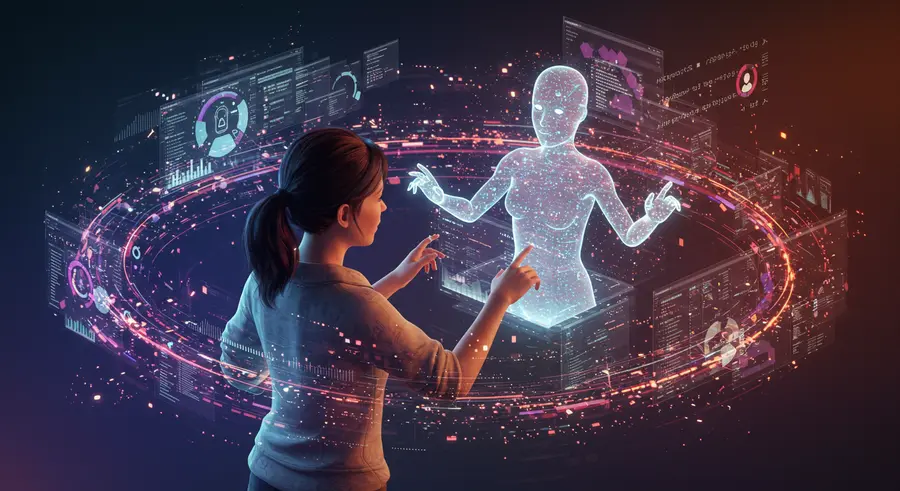Appearance

Welcome, fellow innovators! 👋 In today's fast-evolving tech landscape, Artificial Intelligence (AI) isn't just a buzzword; it's becoming an indispensable partner in every aspect of our lives, especially in software development. Today, we're diving deep into the exciting world of AI-Augmented Development, exploring how AI tools are not replacing, but enhancing the capabilities of developers, leading to unprecedented levels of productivity, efficiency, and innovation.
What is AI-Augmented Development? 🤖💡
At its core, AI-Augmented Development refers to the integration of AI-powered tools and techniques throughout the software development lifecycle (SDLC). This isn't about AI writing entire applications from scratch (yet!), but rather about AI assisting developers with repetitive tasks, suggesting improvements, automating testing, and providing insights that accelerate the development process. Think of it as having a super-intelligent co-pilot for your coding journey!
The Power of Partnership: How AI Augments Development 💪
AI-augmented tools are transforming various stages of software development:
Code Generation and Completion:
- What it does: Tools like GitHub Copilot and Amazon CodeWhisperer analyze your existing code and comments to suggest lines of code, entire functions, or even complex algorithms in real-time. This significantly reduces boilerplate code and typing errors.
- Example: Imagine you're working on a Python script that needs to read a CSV file and perform some data cleaning. As you start typing
import pandas as pd, an AI tool might suggest the next lines to load the CSV, handle missing values, or even plot the data, based on common patterns it has learned from millions of code repositories. - Impact: Speeds up coding, reduces cognitive load, and helps developers adhere to best practices.
Intelligent Debugging and Error Detection:
- What it does: AI can analyze code patterns and identify potential bugs or vulnerabilities before the code is even run. It can also assist in pinpointing the root cause of errors by analyzing logs and execution traces.
- Example: A static analysis tool powered by AI can detect subtle security vulnerabilities (like SQL injection possibilities or cross-site scripting flaws) in your web application code, far more effectively than traditional rule-based linters.
- Impact: Improves code quality, reduces debugging time, and enhances application security.
Automated Testing and Quality Assurance:
- What it does: AI can generate test cases, prioritize tests, and even identify critical areas of an application that require more rigorous testing based on code changes and historical data.
- Example: For a complex application, AI can identify which user flows are most impacted by a recent code change and suggest automated tests to cover those specific scenarios, ensuring critical functionalities remain intact.
- Impact: Accelerates testing cycles, improves test coverage, and ensures higher software reliability.
Smart Code Refactoring and Optimization:
- What it does: AI can suggest ways to refactor messy code, optimize performance-critical sections, or even recommend architectural improvements based on patterns observed in high-quality codebases.
- Example: If you have a convoluted
if-elseblock, an AI might suggest refactoring it into a cleaner strategy pattern or a switch statement, explaining the benefits of the change. - Impact: Leads to cleaner, more maintainable, and higher-performing code.
Enhanced Documentation and Knowledge Management:
- What it does: AI can automatically generate documentation from code comments, create summaries of complex systems, and even answer developer questions based on internal knowledge bases.
- Example: Imagine asking your AI assistant, "How does the user authentication module work?" and getting a concise, accurate explanation derived directly from your project's codebase and existing documentation.
- Impact: Reduces documentation burden, improves knowledge sharing, and onboards new team members faster.
AI in Action: Enhancing Version Control 🧑💻🔗
One area where AI-augmented development shines is in enhancing existing tools and workflows. Take Git and Version Control, for instance. You can learn more about the fundamentals of Git here.
While Git itself is powerful, AI can augment its usage:
- Intelligent Commit Message Generation: AI can analyze your code changes and suggest a concise and descriptive commit message, helping maintain a clean and understandable commit history.
- Conflict Resolution Assistance: When merge conflicts arise, AI can analyze the conflicting sections and suggest the most probable correct resolution, significantly speeding up this often-tedious task.
- Code Review Insights: AI can act as an initial reviewer, pointing out potential issues, stylistic inconsistencies, or areas for improvement in pull requests before human reviewers even look at the code.
The Future is Collaborative 🤝🌐
AI-augmented development is not about replacing human developers but empowering them. It frees up developers from mundane, repetitive tasks, allowing them to focus on more complex problem-solving, innovative design, and strategic thinking. This collaborative approach fosters creativity and pushes the boundaries of what's possible in software engineering.
As AI continues to evolve, we can expect even more sophisticated tools that seamlessly integrate into our workflows, making development more intuitive, efficient, and enjoyable. The future of software development is not just intelligent; it's augmented intelligence, where human ingenuity and artificial intelligence work hand-in-hand to build the next generation of digital experiences.
Stay curious, keep coding, and embrace the augmented future! ✨